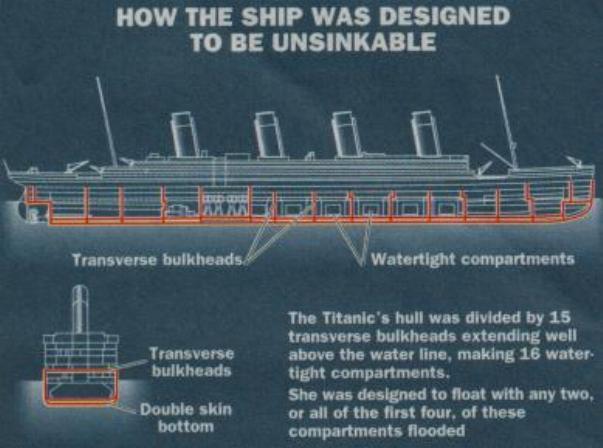
Section Branding
Header Content
Titanic: How She Sank
Primary Content

April 15th 2012 is the 100th anniversary of the sinking of Titanic, advertised as the “unsinkable ship.” Sadly, we know that statement turned out to be false when over 1500 passengers perished when the ship sank, but there was good science and good engineering in the ship’s design.
Using density, volume, weight, and mass, you can incorporate the history of Titanic with the science of its demise and toss in some language arts with new vocabulary, too. The CCGPS trainings emphasize this type of cross-platform learning.
The ship had 15 bulkheads which divided the hull, the shell, of the ship into 16 sections. Titanic was designed so that any 3 sections could flood with water and the ship would remain buoyant. That means that the influx of water to any three compartments would not be enough to throw off the balance of density between the boat and the sea around it.
Whether or not an object floats has more to do with density than weight. For example, ships like Titanic weigh tons, but typically float along just fine because they are designed to be less dense than the water around them. The reason Titanic sank is because the density changed when the ship hit the iceberg.
Using some simple items from around the house, you can demonstrate density to your students:
•rock
•shallow pan
•water
•toy boat (I used two small boats taped together to demonstrate the ship breaking)
•permanent pen
The rock will be your “iceberg.” Mark the boat with lines to give you an idea of the bulkheads. When the iceberg struck, it tore into sections 1, 2, 5, 6, and the mailroom, around the ship’s bow. That made the water in each section fill above the ship’s waterline. As the sea water breached the waterline, it began filling the neighboring compartments, too, pulling the ship up into the air until it broke in half because of the pull of gravity on the extended part. [You can demonstrate this by pushing the boat into the water at the front end. Students will be able to see the water move over the lines you drew to represent the bulkheads.] Once the ship split, it was only a matter of minutes before the entire vessel was consumed with water and sank to the bottom of the ocean where it remains today.
WYSIWYG: EMBEDDED VIDEO
Titanic: How She Sank





